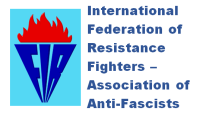A MEASZ országos elnökének hozzászólása a Pedagógusok Lapja cikkéhez.
(A cikket magyar és angol nyelven közöljük az alábbiakban.)
hogy nemes értékrendet követve, határozottan állnak ki a
pedagóguskollégák érdekeiért. A február 10-i számban, Az
emlékezet bíbor bársonya című cikkben szintén tanulságos
eseményekről írnak. Mégis úgy gondoltam, hogy tollat
ragadok, mert az írásban egy fontos dolgot nem említenek
Israel Meir Lau, Izrael volt országos főrabbija budapesti
beszédét idézik, aki azt mondta: a holokauszt idején a világ
három részre oszlott: nácikra és kiszolgálóikra, áldozatokra,
illetve azokra akik „álltak, és nem tettek semmit azért, hogy
megmenekülhessenek az áldozatok”. A volt főrabbi, aki a
jeruzsálemi Jad Vasem intézet elnöke, ezek után ugyan még beszélt arról is, hogy 23 ezer embermentőt tartanak számon, akik a
vészkorszak idején saját életük kockáztatásával is segítettek az
üldözötteknek.
Jellemző a hazai, de a nemzetközi viszonyainkra is, hogy a
köz vélekedésében kihagyjuk a világ negyedik részének említését.
Ide tartoznak azok, akik fegyveres, politikai és civil eszközökkel
felléptek a szörnyűségek ellen, ők voltak az antifasiszta ellenállók
és embermentők. A volt főrabbi úr ugyan megemlíti az
embermentőket, de azokat nem sorolja a világ negyedik részéhez.
Pedig azért lehetett a II. világháborúban legyőzni a fasizmust,
mert az antifasiszta koalícióban a szövetséges csapatok nagyon
nagy véráldozattal sikert értek el. Ehhez tartozik, hogy egy
valamire adó, nemzeti érzésekkel rendelkező magyarnak is
büszkének kellene lennie arra, hogy 22 országban vett részt
magyar antifasiszta ellenálló és embermentő a harcokban.
Büszkének kell lennünk arra, hogy Magyarországon is, ha
csekély létszámban is, de voltak olyan magyarok, akik életüket
áldozták, életüket kockáztatták a demokratikus, független
Magyarországért. Göncz Árpád egykori fegyveres ellenálló
Rákoshegy felszabadításakor megsérült, s a budai Vár tetejére
a gettót, a fővárost felszabadító Vörös Hadsereg azért tette ki a
maga zászlaja mellé a nemzeti lobogónkat, mert elismerte a
magyar antifasiszták közreműködését a harcokban.
Amikor fiataljaink nem kapnak elégséges és hiteles
információkat a II. világháború körülményeiről, nem várható el
az, hogy reális értékítéletük születhessék erről a korról.
Szervezetemben, a Magyar Ellenállók és Antifasiszták Szö-
vetségében (www.antifasiszta.hu) örömünkre még vannak olyan
egykori ellenállók, akik az antifasiszta ellenállásról hitelesen
emlékeznek. De mi lesz akkor, ha már nem élnek ezek a kiváló
emberek?
A korábbi kormányzat idején megkerestük Hiller István
oktatási minisztert, segítségét kértük ahhoz, hogy ugyan a 24.
órában, de hozzunk létre egy olyan emlékházat, múzeumot, ahol
az ellenállóknak emléket állíthatnánk, bátor kiállásukat példaként
bemutathatnánk az utókornak. Miniszter úr formális válaszlevelében a Holokauszt Emlékközponthoz irányított bennünket.
Jellemző, hogy keverjük a II. világégésben az áldozatok szerepét
s azokét, akik tevőlegesen is felléptek a nagy embertelenséggel
szemben.
Sajnálatosan fiataljaink az elmúlt évek oktatási rendszerében
sem kaptak kellő késztetést arra (igen nagy tisztelet a
kivételeknek), hogy a humanista értékek szerint az embertelenséggel szemben fellépők oldalára álljanak, s elítéljék
mindazokat, akik a náci németek mellett itt, Magyarországon
ténykedtek, akik buzgón szervezték akár a halálvonatokba az
embereket.
Lassan a közszolgálati médiumaink is csúsznak a szélsőjobb
irányába. Idén Budapest fasizmus alóli felszabadulásakor, február
13. táján az antifasiszta ellenállásról nem, de a „hős” budavári
magyar védőkről annál több szó esett. Budapest ostromát idézve
azon keseregtek a szélsőjobbhoz közelítő politikusaink, hogy
mennyi civil halt meg az oroszok pusztítása során. Szavaikat nem
helyezték egy szélesebb összefüggésbe, egy összetettebb
viszonyrendszerbe. Így, akik nem ismerik a kort hitelesen,
óhatatlanul a szélsőjobb szavait fogadják el. Fontos, hogy a jövő
nemzedékének megtanítsuk: emberi tisztességük lényege, ha e
kérdésben is elutasítják a hamis, álságos szavakat, nem dőlnek be
azoknak, s kiállnak az igazság mellett. Az egykori antifasiszta
ellenállók és embermentők példája kellene, hogy vezérelje őket.
Reményeim szerint napjainkban ehhez nem kell életüket
áldozniuk, sőt még kockáztatniuk sem. De hinniük kell, hogy a
hétköznapok emberi tartása általuk talán egy picivel szebb
világhoz vezethet.
Mindezek miatt is nagy a felelőssége napjainkban azoknak a
kollégáknak, akik a humanizmus oldalán állnak. Tudom, hogy
kiszolgáltatott a helyzetük, de az ő bátorságukra is szükség van.
Minden elismerésem és tiszteletem az övéké!
Hanti Vilmos elnök
Forrás: A PEDAGÓGUSOK SZAKSZERVEZETE HÍRLAPJA ÉS HÍRLEVELE
2011. MÁRCIUS 10
THE HUMAN STRENGTH OF THE WEEKDAYS
Part four – those who acted against inhumanity
I always read your paper with the highest inquiry
and I do respect your gentle values to endure for the
interest of pedagogues. In the issue of February 10
there was an article about the also instructive
events, titled ‘Az emlékezet bíbor bársonya’.
Notwithstanding I have decided to grab a pen as the
article seemingly was forgotten a significant detail.
You were quoting Israel Meir Lau, the former Chief
Rabbi of Israel who said that at the time of the
Holocaust the world was divided into three groups: the
Nazis and their supporters; the victims, and those who
“stood by and did nothing in order to save the victims.”
The former Chief Rabbi, who now is the Chairman of
Yad Vashem in Jerusalem, spoke about that 23
thousand people are registered as life savers who
helped the chased ones during even the bloodiest
period.
It is typical both in Hungary, both internationally that
we forget to mention the fourth group of the world.
This group includes those who acted against the
terrifying ideas either armored, or with political or
civilian way. They were the resistant antifascists and
life savers. Although the former Chief Rabbi mentions
the life savers but he forgets to rate them as the fourth
group of the world. The only way the fascism could
have been defeated in the World War II was that the
antifascist coalition of the Allies made an incredible
amount of victims in order to achieve success. This
also means that any Hungarian blessed with some
national feelings should be proud on the fact that
Hungarians participated in 22 different countries in the
fight of resistant antifascist and life savers. We should
be proud in Hungary that there were Hungarians who
sacrificed their life for a democratic and independent
Hungary even if there were very few of them. Árpád
Göncz, former armored resistant injured in the
liberation of Rákoshegy. The Red Army that liberated
the ghetto and the capital put the Hungarian national
flag next to their own on the top of Buda Castle
because they acknowledged the contribution of the
Hungarian antifascists during the war.
When our children do not get enough and authentic
information about the World War II we cannot expect
them to have a real view about this period of the
history. Fortunately in my organization, named the
Hungarian Federation of Resistance Fighters and
Antifascists (http://www.antifasiszta.hu) there are some
former resistance fighters that still can recall the
antifascist resistant authentically. But what happens
when this excellent people will no longer be among us?
In the meantime of the previous government we got in
touch with István Hiller, Minister of Education and
Culture in order to ask for help to bring alive a house
for memories, a museum, where we could
commemorate for the resistant fighters and we could
demonstrate their brave stand out to the next
generations in the very last minute. We were turned to
the Holocaust Memorial Center in the Minister’s
formal reply. It is typical that the role of the victims
and those who acted against the inhumanity in their
deeds in the World War II are often blurred.
Unfortunately in the educational system of the last
years our children did not receive enough motivation
(huge respect for the exception) to get into the side of
humanist values, those who raise their voice against
inhumanity and to judge over all those who next to the
Nazi Germans were organizing the deportation of
people to the death trains here in Hungary.
Slowly the civil service media is adrift to the direction
of the extreme-right. This year around February 13 at
the anniversary of the fascist liberation of Budapest the
antifascist resistance was not a topic but the “famous”
hero protectors of Buda castle. Citing the siege of
Budapest, our politics approaching the extreme-right
were moaning over how many civil died as a result of
the Russian destruction. They did not put their words
into a wider context or into a more complex relation.
Therefore those, who do not have a deep knowledge
about that period of history, unwittingly accept the
words of the extreme-right. It is essential to teach the
generations of the future: the subject of the human
respectability is to refuse the false and hypocritical
words in these questions instead of going for it and
endure to the truth. They should be leaded by the
example of the former antifascist resistance fighters
and life savers. Hopefully there will be no need to offer
as a sacrifice or even to risk their lives. But they ought
to believe that their human strength of the weekdays
could lead into a better world.
Consequently our colleagues that stand at the side of
humanism have a huge responsibility. I know that their
situation is defenseless but their audaciousness is also
essential. They have all of my regard and respect.
Vilmos Hanti,
president of Hungarian Federation of Resistance
Fighters and Antifascist
2011. március 21.
Letölthető dokumentumok:Nincs letölthető dokumentum
2024. április 28. Vasárnap






